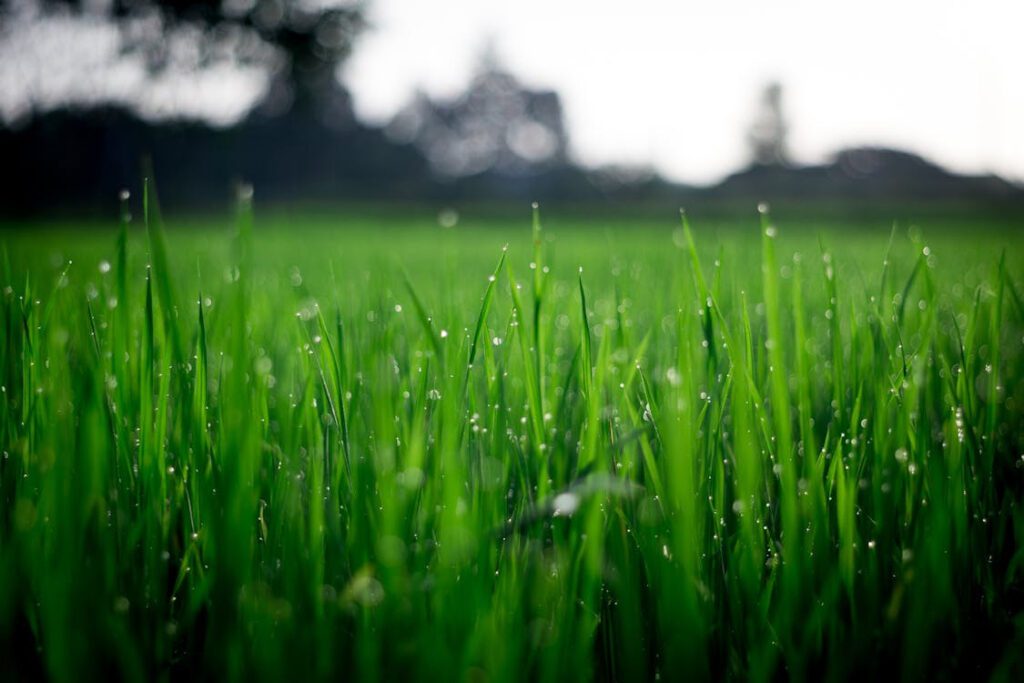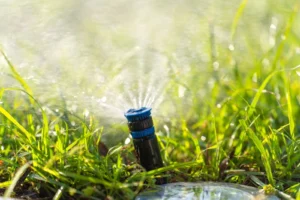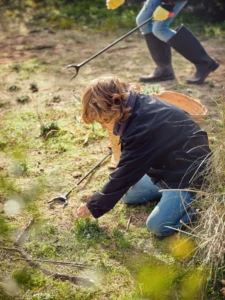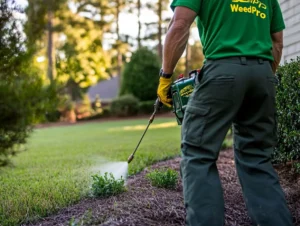Whether you’re a seasoned gardener or simply enjoy a well-maintained lawn, understanding the types of weeds in your yard is essential. Weeds compete with your grass for vital nutrients and can detract from the overall beauty of your landscape. At WeedPro, we’ve made it our mission to help Georgia homeowners identify and manage both annual and perennial weeds, preventing them from overtaking lawns and ensuring healthy, resilient turf. In this guide, we’ll explore the differences between annual and perennial weeds and provide strategies to control them effectively in Atlanta’s warm climate.
Understanding Weeds: An Overview
Weeds are often defined as unwanted plants that compete for resources like water, sunlight, and nutrients with your desired grasses and flowers. A garden weed refers to invasive plants commonly found in garden settings, where they can quickly spread and disrupt the growth of ornamental plants and vegetables. Recognizing the specific types of weeds growing in your yard enables you to tailor your approach to lawn management, ensuring vibrant and healthy turf.
Weed Identification
Identifying weeds accurately is the first step toward achieving a healthy lawn and vibrant garden beds. With so many types of weeds—ranging from annual weeds that sprout and die within a single growing season, to persistent perennial weeds that return year after year—knowing what’s growing in your yard helps you choose the right weed control strategies.
Annual weeds like crabgrass and purslane are notorious for their rapid growth and ability to produce seeds quickly, often taking over bare patches of lawn grass in early spring or summer. These weeds complete their life cycle in just one season, but their seeds can linger in the soil, ready to sprout when conditions are right. Perennial weeds such as dandelions, Canada thistle, and ground ivy (also known as creeping charlie) are more stubborn, thanks to their extensive root systems. These weeds can regrow from even a small piece of root left behind, making them especially challenging to get rid of.
To identify weeds in your yard, pay close attention to their leaves, stems, flowers, and growth habits. Broadleaf weeds like wild violet and ground ivy often have distinctive leaf shapes and can produce colorful blooms—look for purple flowers, white flowers, or even pink or white flowers in early spring or summer. Grassy weeds such as quackgrass and goosegrass have long, narrow blades that can blend in with your lawn, but they often grow faster and form dense mats that crowd out desirable plants. Some weeds, like Canada thistle, feature spiny leaves and purple flowers, while others, like musk thistle, display reddish flowers and can be hazardous to handle—always wear thick gloves when dealing with these.
Effective weed control starts with proper identification. For annual weeds, applying a pre emergent herbicide in early spring can prevent weed seeds from germinating. For perennial weeds, it’s crucial to remove the entire root system—simply pulling the top growth won’t prevent regrowth. Post emergent herbicides can help control established weeds, but be sure to choose the right product for the specific type of weed you’re targeting. In garden beds, mulching can help suppress weed growth and retain soil moisture, while organic gardening methods like composting can improve soil health and make it harder for weeds to take hold.
Some common weeds, such as dandelions with their bright yellow flowers and fluffy seed heads, or clover with its lush green mats, are familiar sights in many lawns. Wild violets, with their heart shaped leaves and purple or white flowers, can form dense mats that are tough to remove. To get rid of these persistent weeds, dig out the entire root and use a targeted weed killer if needed. For more hazardous weeds like poison ivy or musk thistle, always use caution and wear protective clothing.
By learning to identify weeds and understanding their growth habits, you can take a proactive approach to weed control. Regularly inspect your lawn and garden, act quickly to remove unwanted plants, and use a combination of manual, chemical, and organic methods to maintain a weed free lawn. Whether you’re dealing with annual weeds, perennial weeds, or even biennial weeds, a little knowledge goes a long way toward keeping your outdoor spaces healthy and beautiful.
Types of Weeds
Annual Weeds
Annual weeds are plants that complete their entire life cycle within a single growing season. They typically germinate, grow, flower, and die all within the span of a few months.
Characteristics and Lifecycle
These weeds can be classified into two categories:
- Summer Annuals: Germinate in spring and die off as cold weather approaches in fall.
- Winter Annuals: Germinate in fall, survive through winter, and complete their life cycle in early spring.
Controlling annual weeds is most effective when targeting young plants before they mature and set seed. Early summer is a critical period for managing summer annual weeds before they become established.
Common Annual Weeds in Atlanta
Some prevalent annual weeds found in Atlanta include:
- Crabgrass: A common nuisance that spreads rapidly in sunny areas.
- Chickweed: Thrives in cold weather, often appearing in winter. It can be identified by its star shaped flowers and the presence of seed pods after flowering.
- Henbit: A purple-flowered plant that grows in early spring.
- Annual Bluegrass (Poa annua): Outcompetes grass in cooler conditions.
- Purslane: Can be recognized by its small yellow flowers.
One effective way to control these annual weeds is to pull weeds by hand before they set seed.
Perennial Weeds
Perennial weeds are a type of perennial plants that survive for multiple years. Unlike annuals, many perennial weeds have an extensive root system that allows them to persist through seasons and spread underground.
Characteristics and Lifecycle
Perennial weeds generally die back above ground in winter but regrow from the root system when conditions become favorable, so effective removal requires extracting the entire plant, including all roots, to prevent regrowth.
Common Perennial Weeds in Atlanta
In Atlanta, some notably troublesome perennial weeds are:
- Dandelion: Recognizable by its bright yellow flowers and fluffy seed heads.
- White clover: Often seen in lawns, white clover can indicate healthy soil but is still unwanted in manicured grass areas.
- Plantain: Characterized by broad leaves, it can thrive in compacted soil.
- Ground Ivy (Creeping Charlie): A creeping plant that forms dense mats and spreads via creeping stems.
- Nutsedge: Known for its grass-like appearance, nutsedge can be identified by its triangular stems and brown seeds, making it particularly invasive.
- Pokeweed: This weed can be identified by its light green leaves and dark purple berries.
- Oxalis: Noted for its light green leaves and clover-like appearance.
- Dallisgrass: Thrives in both sandy and clay soil, making it adaptable to various lawn conditions.
Many of these are broadleaf weeds and can be controlled with a selective broadleaf herbicide.
Weed Control Strategies
Cultural Control Measures
Effective control begins with preventive measures that promote a healthy lawn:
- Maintain a Dense Lawn: A robust lawn naturally shades out weeds.
- Proper Mowing: Adjust your mower to the right height based on the grass type to hinder weed growth.
- Fertilize Appropriately: Use the right fertilizers to encourage vigorous grass growth while minimizing weed establishment.
- Irrigation: Ensure your lawn receives adequate moisture without overwatering, as excess water can create moist soil conditions that encourage weed proliferation.
Chemical Control Options
- Pre-emergent Herbicides: These treatments target annual weed seeds before they have a chance to germinate. Timing is crucial, as appropriate application should occur early in the season.
- Post-emergent Herbicides: A post emergent herbicide is applied after weeds are visible and actively growing. Different formulations are available for annual and perennial weeds, emphasizing the need for identification for effective treatment. Broadleaf herbicide products are effective for controlling broadleaf weeds, while grassy weed species like crabgrass may require different herbicides specifically designed for grasses.
Prevention and Maintenance
Best Practices for a Healthy Lawn
Following best practices will significantly reduce weed infestation:
- Regularly inspect your lawn and remove any visible weeds before they set seed.
- Fill bare spots with sod or seed quickly, as these areas are prime opportunities for weeds.
- Keep a consistent lawn care schedule with Weed Pro, focusing on seasonal weed treatments.
Timing and Seasonal Considerations
- Pre-emergent Treatments: Apply these in early spring for summer annuals and in fall for winter annuals.
- Targeting Perennial Weeds: Apply post-emergent treatments in early fall when pollutants move from the leaves to the roots for nutrient storage: this is when they’re most vulnerable.
Conclusion
Understanding the differences between annual and perennial weeds empowers you to take action. With diligent care and the right strategies, you can create an environment where your grass thrives and weeds struggle. At Weed Pro, we specialize in precision weed management tailored to the unique climate of Atlanta, ensuring your lawn remains lush and beautiful throughout the year.
Frequently Asked Questions about Annual and Perennial Weeds
What are annual weeds and how do they grow?
Annual weeds complete their life cycle within a single growing season, germinating, flowering, and dying all within a few months. Examples include crabgrass and chickweed.
How do perennial weeds differ from annual weeds?
Perennial weeds survive multiple years, regrowing from their root systems after winter. They often die back above ground but return when conditions are favorable.
What are some common perennial weeds found in Atlanta?
Common perennial weeds in Atlanta include dandelions, clover, and ground ivy. These plants can be particularly troublesome due to their aggressive growth patterns.
How can I effectively control annual weeds in my yard?
To control annual weeds, consider cultural practices like maintaining a dense lawn, proper mowing, and timely application of pre-emergent herbicides.
Why is it important to understand the types of weeds in my lawn?
Knowing whether your weeds are annual or perennial helps tailor your management strategy, ensuring your lawn remains healthy and aesthetically pleasing.
When should I apply pre-emergent treatments for weeds?
Apply pre-emergent treatments in early spring for summer annuals and in fall for winter annuals to prevent weed seed germination effectively.







